Ford Transit Bus vs Hyundai Staria – Which car suits you better?
Both models have their strengths – but which one suits you more?
Compare performance, efficiency, price and space directly: Ford Transit Bus or Hyundai Staria?
Here’s where it gets real: The technical differences in detail
Costs and Efficiency: When it comes to price and running costs, the biggest differences usually appear. This is often where you see which car fits your budget better in the long run.
Hyundai Staria has a a bit advantage in terms of price – it starts at 42400 £, while the Ford Transit Bus costs 50500 £. That’s a price difference of around 8072 £.
Fuel consumption also shows a difference: the Hyundai Staria manages with 7.60 L and is therefore clearly more efficient than the Ford Transit Bus with 9.40 L. The difference is about 1.80 L per 100 km.
Engine and Performance: Power, torque and acceleration are the classic benchmarks for car enthusiasts – and here, some clear differences start to show.
When it comes to engine power, the Hyundai Staria has a distinctly edge – offering 225 HP compared to 150 HP. That’s roughly 75 HP more horsepower.
There’s also a difference in torque: the Ford Transit Bus pulls minimal stronger with 390 Nm compared to 367 Nm. That’s about 23 Nm difference.
Space and Everyday Use: Whether family car or daily driver – which one offers more room, flexibility and comfort?
Both vehicles offer seating for 9 people.
In curb weight, the Hyundai Staria is slight lighter – 2275 kg compared to 2338 kg. The difference is around 63 kg.
In terms of boot space, the Hyundai Staria offers strongly more room – 831 L compared to 0 L. That’s a difference of about 831 L.
When it comes to payload, Ford Transit Bus noticeably takes the win – 1162 kg compared to 775 kg. That’s a difference of about 387 kg.
All in all, the Hyundai Staria shows itself to be leaves its rival little chance and secures the title of DriveDuel Champion.
It impresses with the more balanced overall package and proves to be the more versatile companion for everyday use.
Ford Transit Bus
The Ford Transit Bus is renowned for its robust performance and spacious interior, making it an ideal choice for both commercial and personal use. With its efficient handling and modern design, it effortlessly combines practicality with comfort. Its adaptability and versatility ensure it meets the demands of various driving needs, from urban transport to long-distance journeys.
details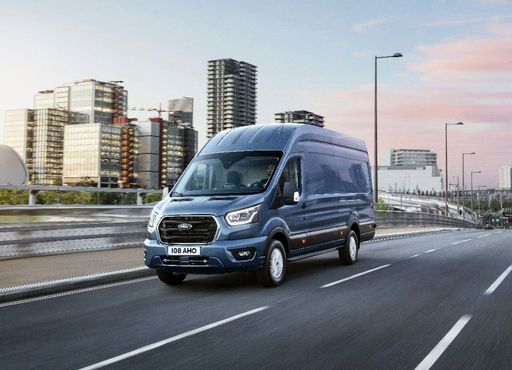 @ media.ford.com
@ media.ford.com
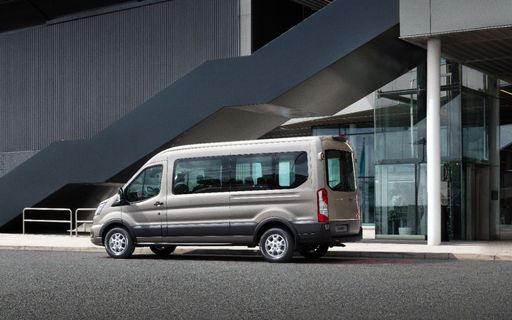 @ media.ford.com
@ media.ford.com
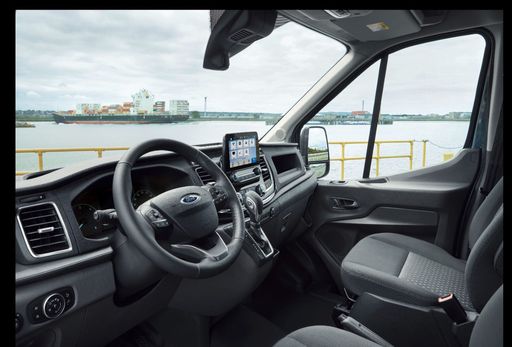 @ media.ford.com
@ media.ford.com
Hyundai Staria
The Hyundai Staria stands out with its futuristic design, characterised by sleek lines and an expansive front grille that makes a bold statement on the road. Inside, it offers a spacious and versatile interior, providing a comfortable ride for both driver and passengers. This vehicle effortlessly combines practicality with a touch of luxury, appealing to families and professionals alike.
details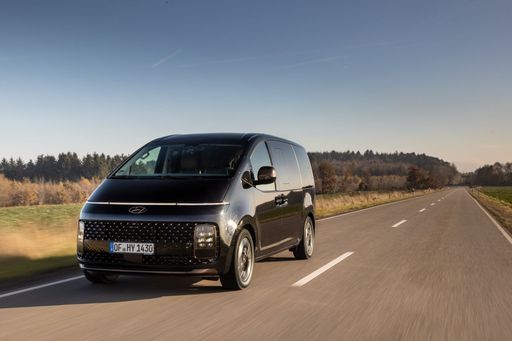 @ hyundai.news
@ hyundai.news
 @ hyundai.news
@ hyundai.news
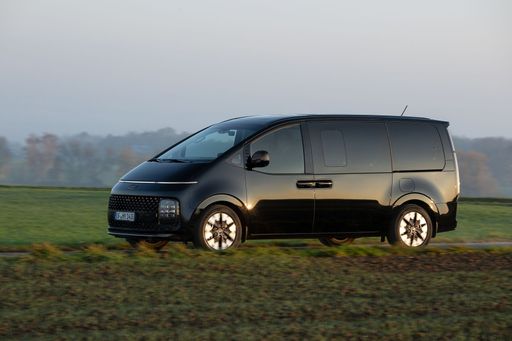 @ hyundai.news
@ hyundai.news
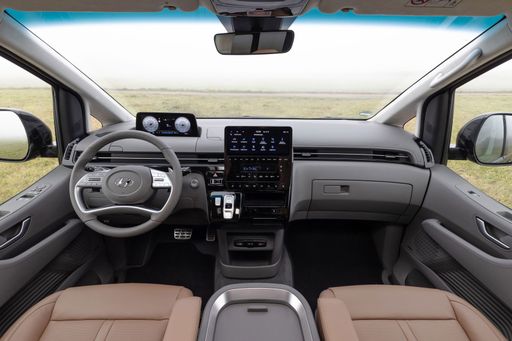 @ hyundai.news
@ hyundai.news
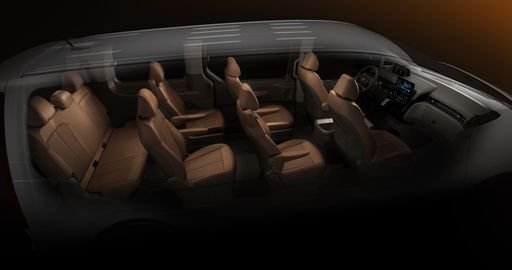 @ hyundai.news
@ hyundai.news
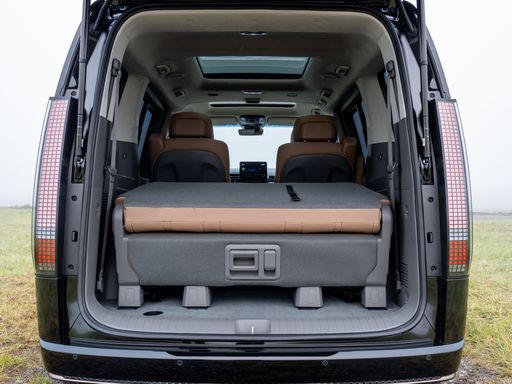 @ hyundai.news
@ hyundai.news

|

|
|
|
|
Costs and Consumption |
|
|---|---|
|
Price
50500 - 52900 £
|
Price
42400 - 50500 £
|
|
Consumption L/100km
9.4 - 9.5 L
|
Consumption L/100km
7.60 L
|
|
Consumption kWh/100km
-
|
Consumption kWh/100km
-
|
|
Electric Range
-
|
Electric Range
-
|
|
Battery Capacity
-
|
Battery Capacity
-
|
|
co2
245 - 248 g/km
|
co2
172 g/km
|
|
Fuel tank capacity
70 L
|
Fuel tank capacity
65 L
|
Dimensions and Body |
|
|---|---|
|
Body Type
Bus
|
Body Type
Bus
|
|
Seats
9
|
Seats
7 - 9
|
|
Doors
4
|
Doors
5
|
|
Curb weight
2338 - 2385 kg
|
Curb weight
2275 - 2345 kg
|
|
Trunk capacity
0 L
|
Trunk capacity
117 - 831 L
|
|
Length
5531 - 5981 mm
|
Length
5253 mm
|
|
Width
2059 mm
|
Width
1997 mm
|
|
Height
2530 - 2533 mm
|
Height
1990 mm
|
|
Max trunk capacity
-
|
Max trunk capacity
431 - 1303 L
|
|
Payload
1115 - 1162 kg
|
Payload
605 - 775 kg
|
Engine and Performance |
|
|---|---|
|
Engine Type
Diesel
|
Engine Type
Full Hybrid
|
|
Transmission
Automatic
|
Transmission
Automatic
|
|
Transmission Detail
Automatic Gearbox
|
Transmission Detail
Automatic Gearbox
|
|
Drive Type
Front-Wheel Drive
|
Drive Type
Front-Wheel Drive
|
|
Power HP
130 - 150 HP
|
Power HP
225 HP
|
|
Acceleration 0-100km/h
-
|
Acceleration 0-100km/h
10.20 s
|
|
Max Speed
-
|
Max Speed
167 km/h
|
|
Torque
360 - 390 Nm
|
Torque
367 Nm
|
|
Number of Cylinders
4
|
Number of Cylinders
4
|
|
Power kW
96 - 110 kW
|
Power kW
165 kW
|
|
Engine capacity
1996 cm3
|
Engine capacity
1598 cm3
|
General |
|
|---|---|
|
Model Year
2024
|
Model Year
2024
|
|
CO2 Efficiency Class
G
|
CO2 Efficiency Class
F
|
|
Brand
Ford
|
Brand
Hyundai
|
What drivetrain options does the Ford Transit Bus have?
Available configurations include Front-Wheel Drive.
The prices and data displayed are estimates based on German list prices and may vary by country. This information is not legally binding.
